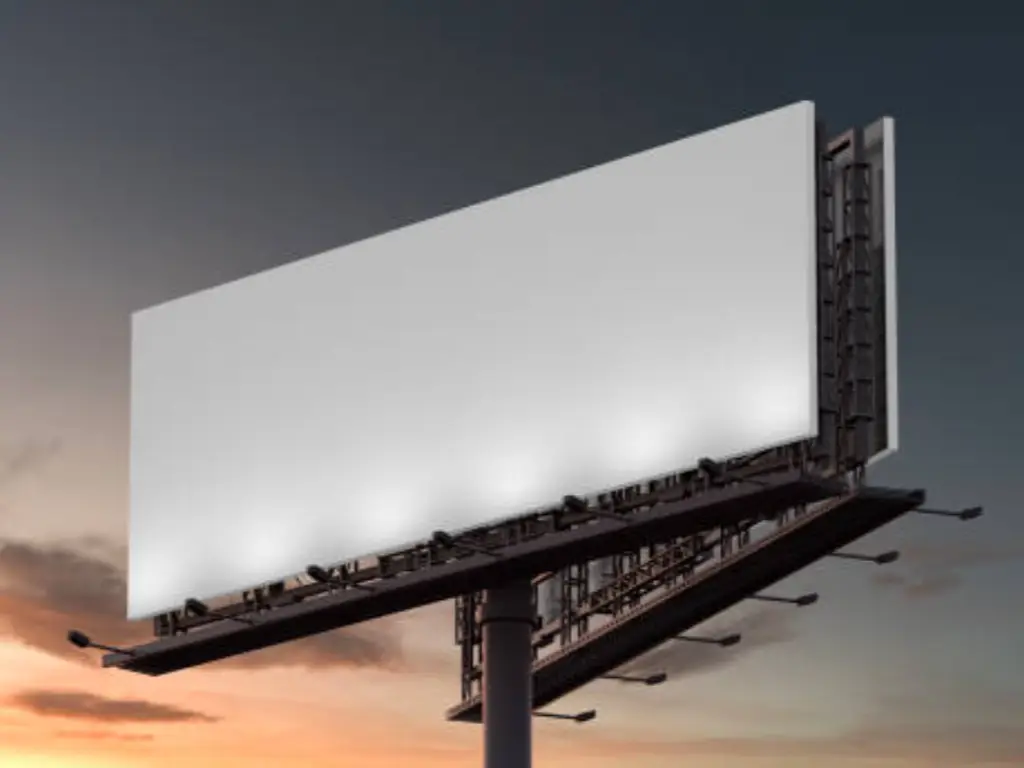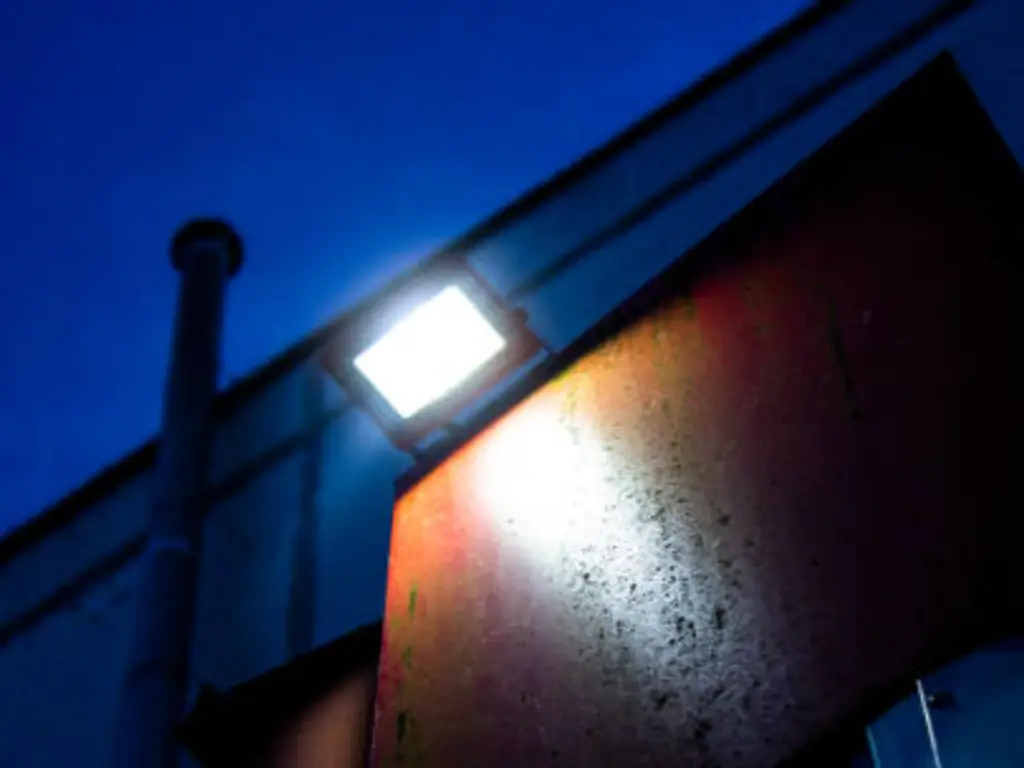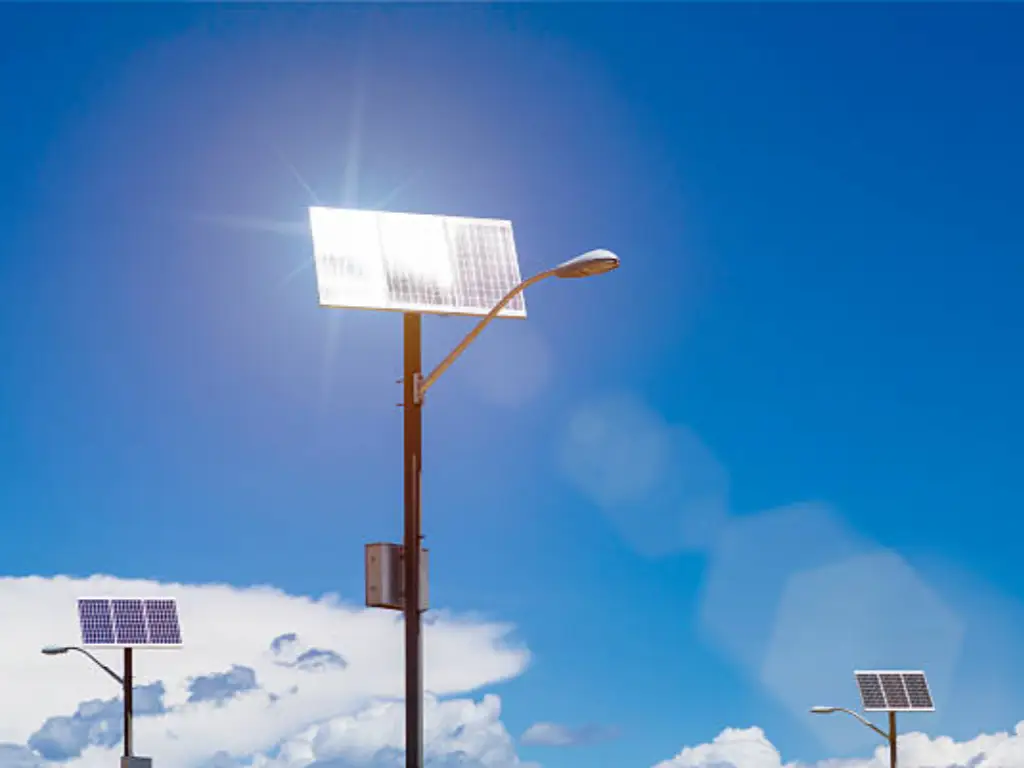Beyond Brightness – Why a Strategic Layout is Your Biggest Asset
In outdoor advertising, the billboard during the dark hours of the night is a wasted opportunity. But merely to pour on the sign with light is the fault of a tyro. The effect of an advertisement is not true lighting: it is a carefully designed lighting system that improves the visibility and clarity. A strategic plan will turn an ordinary advertisement into a powerful image that is going to work 24 hours on your ad dollars.
A bad layout will leave you with a burnt out glaring image with hot spots distracting and gloomy, unreadable corners. It may irritate the drivers, contravene the local ordinances, and most importantly, it will not convey the message of the advertiser or reach the marketers who want to achieve quantifiable outcomes.
On the other hand, an ideal layout guarantees visual uniformity from edge to edge, colors come out vivid with real-life-like color, and an image of professionalism and high quality that creates brand trust. This guide will go beyond the simple advice of what to purchase in terms of lights and explain the secrets of professional layout and design. We shall delve into the tools, the metrics, and the main principles that will enable you to shine your message accurately, intentionally, and with long-lasting visibility.
Exploring Different Types of Billboard Lighting Solutions
A layout will always require you to comprehend the available tools before building it. The technology of illuminated billboards has also changed significantly, getting rid of the outdated, inefficient, and expensive maintenance systems of the past to smarter, more sustainable systems. The modern LED billboard lights are the cutting edge of innovation, not only in that they are brighter but also in the fact that they experience incredible energy savings, which redefine the economics of LED billboard advertising.
Features and Advantages of LED Billboard Lighting
The unquestioned leader in illumination of signs in modern times is the LED (Light Emitting Diode). This usage is not merely a trend, but it is an essential change motivated by unquestionable technological and economic benefits compared to the less efficient technologies, such as metal halide (MH) or high-pressure sodium (HPS) lamps. In the case of LED billboard advertising, it translates to increased dependability, more vivid images, and a drastic drop in operating expenses in the long term.
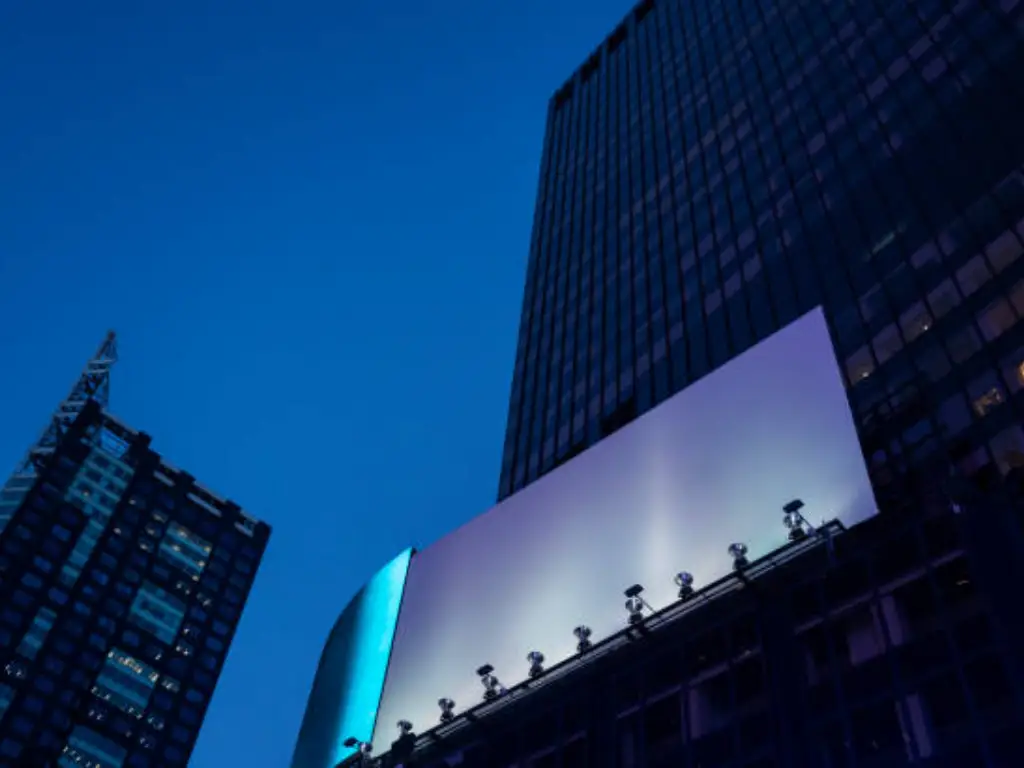
- Unmatched Energy Efficiency: LEDs use up to 80%of the energy used by their legacy counterparts to generate the same quantity of light (lumens). In the case of a typical 14′ x 48′ billboard, which would have used four 1000-watt metal halide bulbs, a replacement of them with four 200-watt LED billboard fixtures would save more than 2000 dollars a year in electricity alone, much less eliminating repeat electricity bills of both advertisers and billboard operators.
- Exceptional Lifespan and Durability: A high-quality industrial LED lighting has a life of 50,000 hours and up (L70 standard). More than 11 years of operation, 12 hours a night. That is as opposed to the 10,000-15,000 and 15000-hour life of a metal halide bulb, which involves frequent and expensive replacement in the form of bucket trucks and expert workers.
- Superior Light Quality: LEDs have a large Color Rendering Index (CRI) of 80+, which indicates that they produce colors much more naturally than the yellowish light of HPS or the greenish light of certain MH lamps. This is to guarantee that the colors of an advertiser are shown as desired, giving the advertiser the visual consistency that makes every LED billboard advertising campaign stronger.
- Instant-On and Controllability: LEDs have full brightness immediately, as opposed to warm-up and cooling in MH lamps. They can also be used in conjunction with smart controls, dimming, scheduling, and even dynamic adjustments, which makes them even more efficient and will save on electricity bills in the long run.
Comparing Solar-Powered and Traditional Billboard Lights
Selection of the appropriate lighting system is characterized by a critical trade-off between first costs, the long-term operating expenses, and location-dependent restrictions. All three major options in the market today, which include Traditional Metal Halide (MH), Grid-Tied LED, and Solar-Powered LED, are unique in profile. It is important to know their differences to make an adequate financial and operational choice.
| Feature | Traditional Lighting (e.g., Metal Halide) | Grid-Tied LED Lighting | Solar-Powered LED Lighting |
| Initial Cost | Low | Moderate | High to Very High |
| Energy Consumption & Operating Cost | Very High | Very Low (Up to 80% savings over traditional) | Virtually Zero |
| Lifespan | Poor (~10,000-15,000 hours) | Excellent (50,000+ hours) | Excellent (Fixture: 50,000+ hours; Battery: 3-5 years) |
| Maintenance | High (Frequent bulb & ballast replacement) | Very Low (Primarily periodic cleaning) | Moderate (Battery replacement, panel cleaning) |
| Light Quality (CRI) | Poor to Fair (Often has a greenish/bluish tint, poor color accuracy) | Excellent (High CRI for true-to-life colors) | Excellent (Same high-quality LED light) |
| Reliability | Fair (Prone to component failure) | High (Stable, solid-state technology) | Moderate (Dependent on weather and battery health) |
| Best Use Case | Increasingly obsolete; only for minimal-budget legacy replacements. | The standard for all urban and suburban billboards with grid access. | Remote/rural areas where grid connection is unavailable or cost-prohibitive. |
Key Metrics That Define a Perfect Layout
You should speak the language of light in order to design like a professional. Knowledge of these three fundamental metrics cannot be compromised in the development of a layout that is effective and efficient.
Lumens vs. Lux: How to Ensure Your Billboard is Bright Enough, Not Blinding
These two terms are more or less the same, but the distinction is vital.
- Lumens (lm) measure the total amount of light emitted by a fixture. Think of it as the total “quantity” of light produced at the source.
- Lux (lx) measures the amount of light that actually falls on a specific surface. It’s a measure of intensity at the target. One lux is equal to one lumen per square meter.
You do not purchase lux, you purchase lumens. But your aim is to reach a desired level of luxury on the billboard face. The success of a layout is determined by the ability of the layout to deliver the same level of lux throughout the sign. In the case of the majority of billboards, 300 to 700 lux would be optimal, bright enough to be visible but not too bright as to cause dangerous glare to motorists.
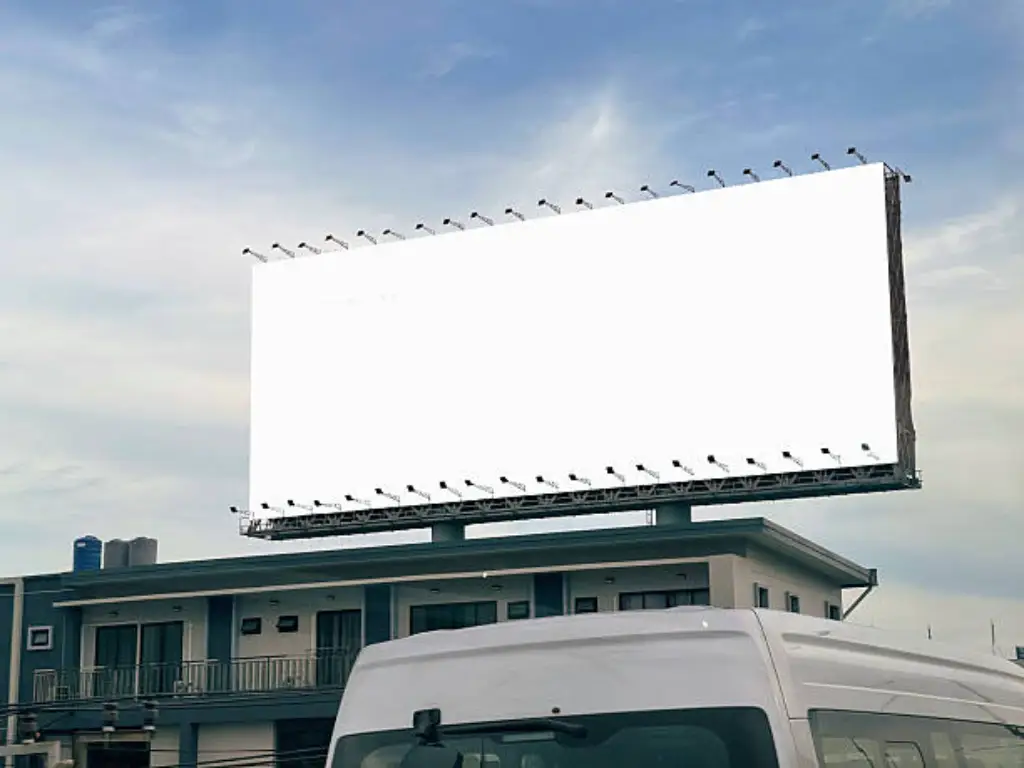
The Power of Beam Angle: Your Secret Weapon for Uniform Coverage
Beam angle is used to determine the distribution of light of a given fixture. It is the key to doing away with those ugly hot spots and dark edges.
- A narrow beam angle (e.g., 30°) creates a tight, intense spotlight. It’s useful for highlighting a specific detail from a long distance.
- A wide beam angle (e.g., 90° or 120°) creates a broad, soft wash of light. This is generally what you want for billboard lighting.
The magic is in the overlap. In an appropriate layout, the fixtures are made with large beam angles, and the light patterns are arranged in a way that they overlap and form a single homogeneous field of light throughout the billboard.
Color Temperature (CCT): Matching the Mood to the Message
Color Temperature (measured in Kelvin, K) is defined as the perceived color of the light itself.
- Warm White (2700K–3500K): It gives a homely, welcoming, and even antique impression.
- Neutral White (4000K–4500K): This is a clean, clear, and neutral light, and can be used as a general-purpose light in advertising.
- Cool White (5000K–6500K): Gives modern graphics and bright colors a fresh and sharp light that radiates daylight.In most commercial billboards, a Cool White (5000K or more) is desirable because it provides the optimum visual acuity, color vibrancy. But it is the ability to fine-tune CCT that enables you to match the lighting perfectly to the creative practice of a particular campaign.
Top-Mounted vs. Bottom-Mounted Lighting
Determining the location of the fixtures is one of the earliest decisions to be made in any layout. Top and bottom-mounted possess their own advantages and disadvantages.
Top-Mounted Lighting:
- Advantages: There is much less light spill (light pollution), which is commonly required in Dark Sky (compliant) areas. It also reduces glare to those approaching drivers who are below the light source.
- Disadvantages: Fixtures are harder to maintain because they are more difficult to reach. They are also capable of casting shadows of the billboard structure itself on the sign face without being placed properly.
Bottom-Mounted Lighting:
- Advantages: It is the easiest and safest to install and maintain. Both enable simple targeting and focusing through the catwalk of the billboard.
- Disadvantages: It may become a major light source that glares at the drivers and pollutes the light when not correctly directed and covered. It may also be prone to vandalism.
This selection is usually determined by local laws, the billboard design, and maintenance factors.
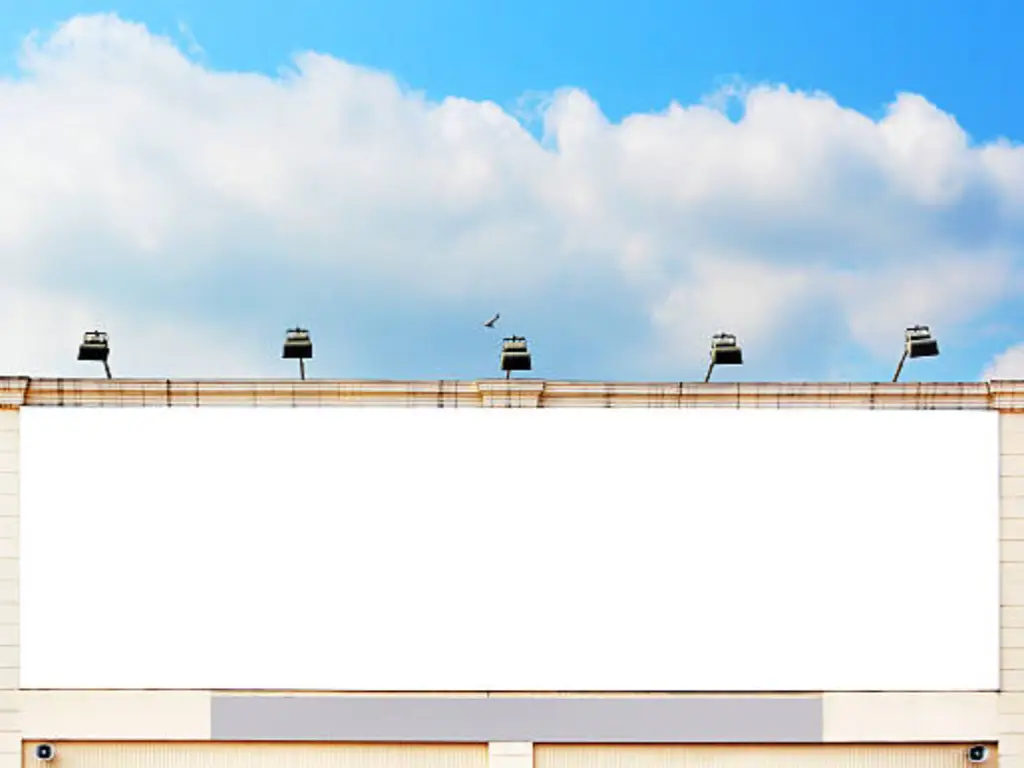
5 Costly Billboard Lighting Mistakes and How to Avoid Them
A good layout is more with not doing anything wrong than with the implementation of principles. Avoid these more frequent and expensive mistakes:
- Disregarding Uniformity (The “Hot Spot” Problem): With inadequate numbers of fixtures or fixtures with the incorrect beam angle, one gets bright spots and dark spots, which appear to make the ad cheap and amateurish.
- Over-lighting the Billboard: Lighting it too much is not good. A lot of brightness wastes power, reduces the durability of the lighting source, poses a nuisance to people by causing glare, and may even wash out the colors of the advertisement.
- Making the wrong selection of resistance: An outdoor light should be weather-proof. The lowest threshold is the IP (Ingress Protection) rating of IP65, which means that it is dust-tight and can resist jets of water. A compromise will result in untimely failure due to the ingress of moisture and dust.
- Failure to pay attention to Thermal Management: LEDs produce heat. Low-cost fixtures constructed on a bad heat sink design will overheat and lose light (lumen depreciation) very quickly, and their operation will have a significantly reduced life.
- Forgive the Total Cost of Ownership (TCO): A low-cost figure is not often a worthwhile purchase. When the expenses of high-quality, long-lasting fixtures, labor, rented equipment, and even energy use are considered, it can be seen that a high-quality and durable one is much more economical in every case during its lifetime.
The WOSEN Advantage: Where Flawless Design Meets Superior Engineering
The most suitable layout is just as good as the fixtures that make it up. Being an ODM/OEM, project-grade factory, we not only sell lights but we design solutions so that the failure issues are avoided on the very first day. We are competitive based on the two main principles:
- Unyielding Durability: Our fixtures are durable. With components of the finest quality and 2.5cm-thick aluminum, we provide an L70 lifespan of 50,000 hours. Having an industry-leading failure of less than 0.3%, combined with a solid IP66 weatherproof and IK8 impact rating, translates directly to virtually no operational and maintenance costs to you.
- Optical Precision Engineered: We offer the instruments for a perfect design. Our fixtures have superior optics that give a flawless, seamless coverage and a color temperature (3,000K-6,500K) that can be adjusted to suit any message of the brand. Combined with the choice of smart single-light controllers, you can have a finely-detailed control of your whole network.
When you choose WOSEN, it is not only a purchase of one light but also an investment in the peace of mind that is provided by the unmatched reliability.
Core Principles for a Flawless Billboard Lighting Design
Having a clear picture of the tools and measurements, and with a trustworthy choice of the fixing, you may now implement the principal tenets of professional layout design.
The Spacing Formula: How to Calculate the Ideal Distance Between Fixtures
Although there are no guidelines that can be followed as a sure rule of thumb, the distance between your light fixtures should be about half the height of the billboard face, which is a good starting point.
- Example: In the case of a normal 14-foot-tall billboard, you would have to begin separating your fixtures at a spacing of about 7 feet.
It is not a strictly adhered-to rule, but a beginning point. You should also modify depending on the beam angle of the fixture; a larger beam could permit a little larger distance. It is always aimed at creating a smooth, light-hearted overlap.
Aiming & Shielding: Maximizing Light on Your Ad, Minimizing Light Pollution
Proper aiming is an art form. Its aim is to brush the billboard’s face and not to crash into it. Adjust the fixtures towards the middle of the beam such that the center point of the beam hits an area about two-thirds up (bottom-mounted) or down (top-mounted) the billboard. The maximum use of the light cone in this technique is made.
Shield or barn door your fixtures to avoid the stray light turning into a nuisance. These mere trifles are very useful in stopping the light right at the edge of the billboard so that your light does not go into the night sky, but remains on your advertisement.
Balancing Light Levels for Consistent Readability from All Angles
The last test of a pro layout is the light level measurements. Read measurements in the center of the billboard and close to the four corners with a handheld lux meter. There should be a ratio of unity in a high-quality layout of 3:1 or more, which implies that the brightest point on the sign cannot be more than three times brighter than the darkest point. This proportion means that the entire message is equally readable and visually consistent at any distance or angle of viewing.
Conclusion
Perfect billboard advertising lighting is an art, a balanced combination of good equipment and clever design. It goes beyond the brute-force method of simple brightness and adopts fine principles of uniformity, color science, and accuracy. With the knowledge of the various lighting solutions, the ability to subject to rule metrics, and the application of established principles in layout, you will turn any billboard into a vibrant, 24/7 advertising powerhouse that brings an amazing visual impact.
The right layout does not simply light up a message; it enhances it, so much so that even when all the rest of the night is lost in the mishaps of the night, it stands out like a sore thumb, getting attention and creating results that marketers can actually quantify. Once you are ready to blend perfect design and unmatched engineering, we, at WOSEN, are ready to assist you in the design of a lighting solution that would withstand the test of time.
